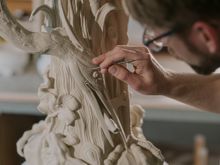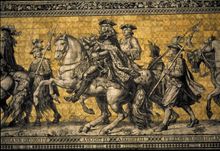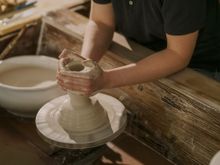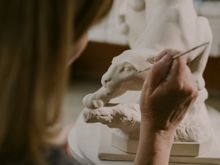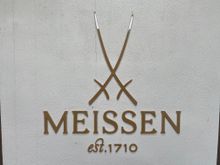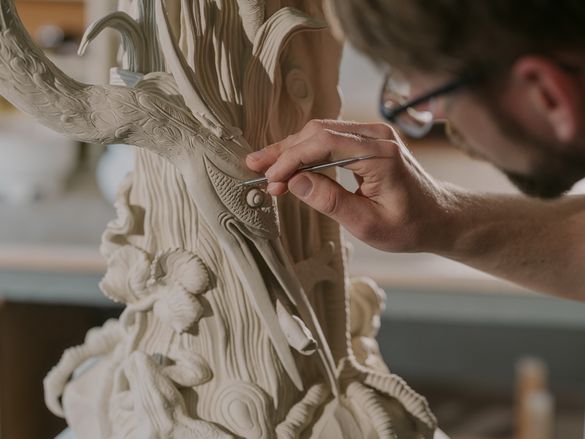 09 Aug 2025
09 Aug 2025
The Porcelain Disease - Maladie de Porcelaine
As early as the 13th century, porcelain was a highly coveted item at the royal courts of Europeand was imported from China at extravagant prices. Attempts were made starting from the early18th century to reproduce the “White Gold” in Europe, with alchemist Johann Friedrich Böttgerfinding success in Dresden in 1708 under commission from Saxony's royal court. That discoverymarked the beginning of a legend that was sealed two years later with the founding of themanufactory by Augustus the Strong, Elector of Saxony, who claimed to have Maladie dePorcelaine, or porcelain sickness, as he was so addicted to collecting beautiful pieces. From2014 to 2024, an international team of experts researched and catalogued the comprehensive,extant royal holdings of Augustus the Strong comprising around 8000 East Asian porcelainobjects. The results are published on 'The
Royal Dresden Porcelain Collection'
Saxony's Porcelain Collection at the Dresden State Art Collections
The collections of the Saxon king, Augustus the Strong, are today to be seen in the Dresden State Art Collections, in the Porcelain Collection (Porzellansammlung). Of the manythousands of pieces that he amassed, the most stunning and rare are to be found in the Zwingerin Dresden today. Precious vases, figurines and life-sized sculptures were modelled after realanimals owned by the Saxon king, alongside the finest dining services. Architect and designer Peter Marino developed the new design for the galleries holding the most beautiful and rare ofthe 20,000 pieces preserved in the Dresden Zwinger. The New York architect, who hadpreviously focussed on designing private residences and flagship stores for major fashionhouses, underscores the luxury character of the porcelain through his presentation of the pieceseither singly or arranged in groups. Largely uncased and freestanding, visitors are able toexperience the porcelain more intimately than is usually the case. And, visitors get a beautifulbackdrop that they can later visit: the unique inner courtyard of the Dresden Zwinger Museumbuilding.
Special Exhibition on Meissen Porcelain during the East German Period
From September 20 to February 22, 2026, there is a special exhibition at the Japanese Palace of the Meissen Porcelain during the East German period. The Japanese Palace—the porcelain palace built by Augustus the Strong just for his collection—offers an exciting yet fitting setting. Despite all the contradictions of the socialist system of government, the great Baroque tradition of Europe's first porcelain manufactory remained influential. Monumental murals for the Palace of the Republic and other central buildings of the GDR, state gifts, and a medal that Sigmund Jähn carried with him on his space flight testify to the unfailingly high prestige value of Meissen porcelain as a luxury item. Design sketches, theater costumes, film excerpts, illustrated magazines, and much more provide insight into the art and cultural-historical context of Meissen porcelain during the GDR era.
The exhibition also explores the identity-forming role of the world-renowned manufactory from the perspective of citizens in both East and West Germany, where a large portion of Meissen porcelain was exported in exchange for foreign currency. What remained in the home country, and what significance did Meissen have in everyday life and collective memory on both sides of the Wall? Artistically sophisticated photo series from the 1950s and late 1980s, as well as interviews with contemporary witnesses, tell of everyday working life in Europe's largest porcelain manufactory.
Experiencing MEISSEN in Meissen
The quality of Meissen porcelain has its beginnings in the manufactory's own mine near the city of Meissen, where the purest kaolin is sourced day after day. This white clay is the key to the striking radiance of Meissen porcelain. The precise blending of kaolin with native feldspar and quartz has been refined in Meissen over the past 300 years and is still completed by hand to this day. The in-house training to become a painter or shaper lasts over three years, while achieving the level of Master takes many years more. A piece created for the “Limited Masterworks” collection requires months of elaborate handicraft, learned over decades of exacting training.
Each piece of Meissen porcelain has its beginnings in the manufactory's archives, the oldest and largest treasury of models and molds anywhere in the world. Each new piece that bears the Meissen name is a modern interpretation of European art and cultural history. Artists from a variety of disciplines frequently collaborate with Meissen artisans on contemporary pieces, pushing the manufactory to the highest echelons of artistic accomplishment. And there are lines of beautifully designed items, including jewelry, household goods, fine art,and decorations.
There are a number of fun and experiential ways to visit the Meissen manufactory. With the “manufakTOUR” you can experience the artisanal creation of porcelain live. Our show workshop also brings the world-famous Meissen porcelain to life in 14 languages! You can ask experienced porcelain makers detailed questions about the production process. In the creative workshops, you can learn the techniques required to design porcelain by hand and create your own work of art or fer paint your very own MEISSEN mug and create a very special souvenir of your visit. On a tour of the Meissen Porcelain Foundation Museum, you will discover a multitude of exhibits from all eras of Europe's first porcelain manufactory. A selection of 2,000 porcelain objects and over 300 years of porcelain history await you from around 33,000 historical porcelains. And, last but not least, you can really shop! The gift store at the MEISSEN headquarters is literally mouthwatering.
The exhibition at the Meissen Porcelain Foundation Museum: "Maladie 2.0. Ten Years of the Meissen Porcelain Foundation" will be showcased until February 22, 2026. The Foundation preserves Meissen porcelain as a cultural asset, including looking after the Meissen Porcelain Manufactory's historical collection.The exhibition sheds light on the Foundation's work whilst also showcasing Meissen porcelains given over to the subject of collecting.


